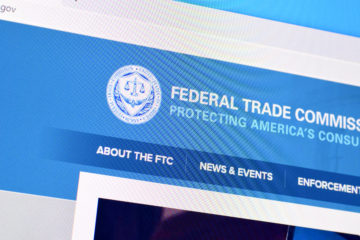In response to rising prices, President Biden has formed a strike force to combat what he deems “unfair and illegal pricing.” Tasked with holding corporations accountable for excessive price hikes, this initiative raises significant concerns about government overreach and economic freedom. At our think tank, we believe that economic growth and consumer welfare are best served by free markets and minimal government intervention. Biden’s strike force, led by Federal Trade Commission Chair Lina Khan and Justice Department antitrust head Jonathan Kanter, risks stifling competition and innovation, leading to unintended consequences like shortages and reduced investment. Market Institute President Charles Sauer has a new article that critically examines the formation and potential impact of this strike force, emphasizing the historical, legal, and economic arguments against using antitrust laws to control prices and underscoring the importance of market mechanisms.
He writes:
“Continuing concerns about rising prices have caused President Biden to get in touch with his inner Nick Fury and form a strike force on unfair and illegal pricing. President Biden no doubt hopes the strike force will be the economic policy equivalent of the Avengers. However, it is more likely to resemble the Marvels. The strike force’s mission is to make sure “corporations are held accountable when they try to rip off Americans, when they try to break the law by keeping prices too high.”
The strike force will accomplish this mission via “interagency coordination to increase federal efforts to deny and stop corporations who are illegally raising prices.” The strike force will focus on price increases on prescription drugs, health care, food and groceries, housing, and financial services. Unfortunately for the American people, Biden’s strike force will not be headed by Iron Man and Captain America. Instead, it will be headed by Federal Trade Commission (FTC) Chair Lina Khan and Justice Department antitrust head Jonathan Kanter. Khan and Kanter are the dynamic duo of the “hipster Brandeisian” movement to revert to the “big is bad” standard of antitrust enforcement, and to use antitrust as a tool to expand governmental control of the economy.
The strike force leaders may find their mission thwarted by a foe more powerful than Thanos: the federal courts. Federal courts have never recognized “profiteering” and excessive pricing as a violation of antitrust laws. For example, in the case of United States v. Aluminum Co. of Am (2 cir. 1945) the Supreme Court reversed a judgment that Aluminum company of America violated antitrust law because the judge’s jury instructions referenced “higher price[s] . . . than necessary” and “fair price.” This decision was made at a time when the federal courts were much more likely to interpret antitrust laws liberally—and to defer to the judgment of regulatory agencies—than is the modern court.
There are sound economic reasons why even a Brandeisian approach to antitrust policy would not regard the charging of “excessive” prices as a violation of antitrust laws. While all antitrust judgments involve a level of subjectivity, government officials can use metrics such as a firm’s market share and its history of acquiring or merging with competitors to help determine whether to bring an antitrust action. There are no objective metrics to help federal bureaucrats and lawyers determine when a price is too high. The “correct” price of a good is the result of many interacting and changing factors, including production costs, the prices of similar products and substitute goods, and of course, ever-changing consumer demand.
It is true that whether a business’s actions result in higher or lower prices is a contributing factor in whether government decides to bring an antitrust action under the consumer welfare standard. However, these cases are related to specific actions that increase the firm’s market share and allow the company to increase prices, not the price increases themselves.
Government-mandated price ceilings inevitably result in shortages, as producers have no incentive to provide artificially cheap goods in the quantities demanded by consumers. One need not even look at the history of failed economic “experiments” of the Soviet Union or Cuba to see that this is the case; the disastrous result of President Richard Nixon’s 1971 wage and price controls are a more familiar example.”


